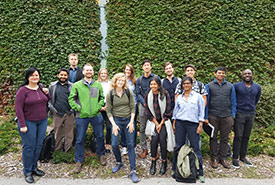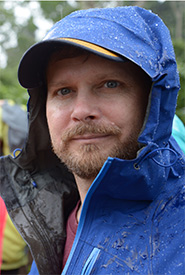Measuring what matters: Biocapacity and ecological footprint

Participants of the joint Global Footprint Network and York University workshop (Photo courtesy of Martin J. Bunch, PhD)
The most-used measure of a country’s progress is its gross domestic product (GDP) — the value of the goods and services produced over a period of time, such as a year. A huge drawback of GDP, however, is that it does not fully reflect things like the country’s standard of living or income distribution. Just because a country’s GDP is high does not mean that all, or even most, of the population is doing well.
The human development index (HDI) is an alternative indicator. It takes into account per capita income, life expectancy and education. There is even an inequality adjusted version of the HDI. While this measurement provides a more holistic alternative to GDP, both indicators still miss something fundamental. They miss the fact that all economic activity and human well-being is inseparably linked to ecosystems, which provide everything from oxygen to lithium, the ability to regenerate, waste absorption and much more.
One way to fill this gap is to measure the amount of biologically productive land and sea area needed to supply a person or a population with their current resource demands. The next step is to then compare this to biocapacity, which is the amount of biologically productive area that is available. And this is what ecological footprint and biocapacity measurements do.
Since 2003, the Global Footprint Network, a U.S.-based charitable non-profit, has produced and promoted the measures of ecological footprint. Last autumn, the organization chose to collaborate with York University’s Faculty of Environmental Studies, allowing York University to become the global datacentre of the measure applied to all nations in the world. The university plans to build an international network of academics and others who will continue to improve the calculations of ecological footprint and its application to economies.
Canadians are among the millions of people worldwide who have calculated their individual ecological footprint, while many municipalities and the Province of Ontario have used it as an environmental performance measure.
The unique ecological footprint and biocapacity approach bring together environmental, economic and social variables to better understand our planet’s demands and limits. York University is now working to make the ecological footprint and biocapacity more accurate.
This post was co-authored by Eric Miller. To learn more about York University's Ecological Footprint Initiative, click here.


